Quantum Annealing in 2024: Practical Quantum Computing
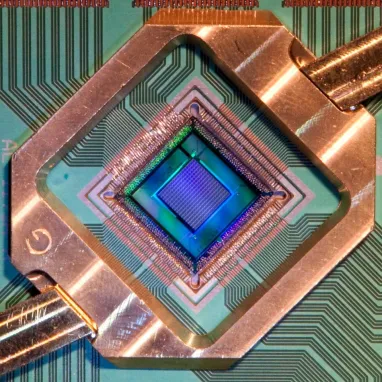
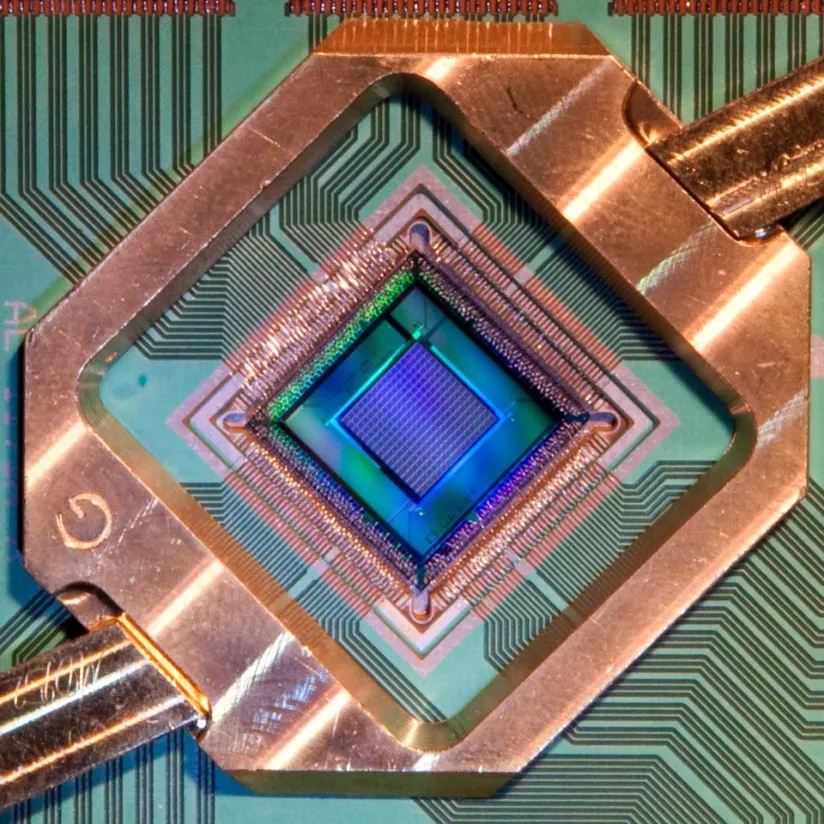
Quantum annealing is a promising quantum technology for companies that have urgent optimization problems which take too long for traditional computers to solve. It can be used to solve optimization problems more effectively than traditional computers. However, it is still mostly used in academia and more R&D is required to build commercial quantum annealers.
There are different approaches to build quantum computing hardware such as universal gate model quantum computers or quantum annealers. Universal gate model quantum computing, also called general purpose quantum computing, is the most powerful and flexible type of quantum computer but it is hard to build and maintain the stability of qubits. Quantum annealers are the least flexible type of quantum computer in terms of application but it is easier to build a stable quantum annealing processor and qubits.
What is Quantum Annealing?
Quantum annealing (which also includes adiabatic quantum computation) is a quantum computing method used to find the optimal solution of problems involving a large number of solutions, by taking advantage of properties specific to quantum physics like quantum tunneling, entanglement and superposition.
Adiabatic process is a term commonly used in thermodynamics. For example, in order to harden an iron, the temperature can be raised so the molecular speed increases and strong bonds are formed. The process of stabilizing these bonds by slowly cooling them is called “annealing” in metallurgy. Quantum annealing works in a similar way, where the temperature is replaced by energy and the lowest energy state, the global minimum, is found via annealing.
How does it compare with other QC approaches?
There are three basic quantum computing methods: Analog Quantum Model, Universal Quantum Gate Model and Quantum Annealing. Although these approaches seem to be completely separate, the intersection sets are not empty. These three models offer different perspectives on the practical applications of quantum computing.
Universal quantum gate model is based on creating quantum structures using stable qubits and solving today’s problems with quantum circuits. However, it is difficult for qubits to maintain stability. This problem grows as the number of qubits increases. As a result, universal quantum gate model computers are confined to labs and do not yet have practical applications.
On the other hand, quantum annealing provides an approach that focuses on the solution of NP Hard problems and is less affected by noise than gate model quantum computing. this feature allows more qubit usage, and therefore more parameters for specific problems.
How does Quantum Annealing work?
In quantum annealers, each state can be represented as an energy level. These states are simulated in a short time by taking advantage of the superposition and entanglement properties of qubits and the lowest energy result is obtained. The lowest energy state gives the optimal solution or the most likely solution.
For example, let’s consider a travelling salesman problem. Imagine a salesman who needs to stop by 50 different cities and come back to the starting point with a minimum distance. Mathematically, there are 50 factorial different solutions to this problem. Since we are looking for the shortest distance, we need to find the least energy situation in other words, global minimum. Finding the shortest path by calculating all the possibilities is a costly method in terms of time and energy, for many complex problems, it is almost impossible.
Using quantum annealing, this problem is designed with a method called coupling qubits. Thanks to the different magnetic fields applied to the qubits, the distance between each city is added to the design as an energy parameter.

With the entanglement property, each qubit can affect the other’s state and each solution creates a new state. Quantum annealer calculates the lowest energy level between these states and this equals the optimal solution.
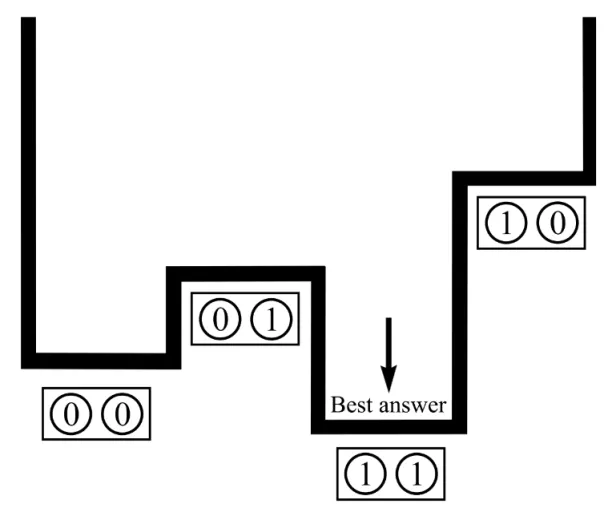
Another important point here is the quantum tunneling feature. With this feature, the transition between states is instantaneous. This means, transition between the energy levels does not require electrons to climb the barrier, they just pass it.
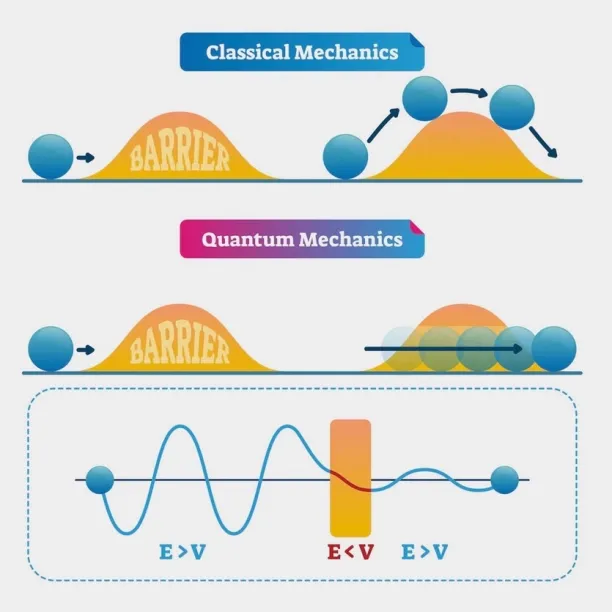
Why does it matter now?
Quantum annealing performs better than classical computational methods to solve some optimization problems which are important for numerous industries such as healthcare and finance. Additionally, quantum annealing is likely to become commercially available before other quantum technologies.
Volume of data is increasing and quantum annealing offers exceptional methods for solving optimization problems which increase in complexity with more data availability. It promises to be the right tool for rapid development in science, mathematics and engineering.
Although quantum annealing is not as widely applicable as quantum computers, it is promising in the short term. This is because it is inherently resilient against noise than quantum gate model and analog quantum approaches. Currently, there are vendors already offering commercial quantum annealing solutions while a universal quantum computing solution is in earlier stages of research.
What are its potential applications/use cases?
For general usage areas of quantum computer, you can review our previous article. Here we will look at potential use cases for quantum annealing.
Quantum annealing is generally used to solve combinatorial optimization problems such as machine learning, portfolio optimization, route optimization. This is because optimization problems aim to find the minimum point in a function and quantum annealing can be used to calculate the minimum point of a function containing a large number of variables.
Considering the potential uses, we can list the main topics as follows.
- Machine Learning
- Optimization
- Financial modelling
- Security
- Healthcare
- Material Science & chemistry
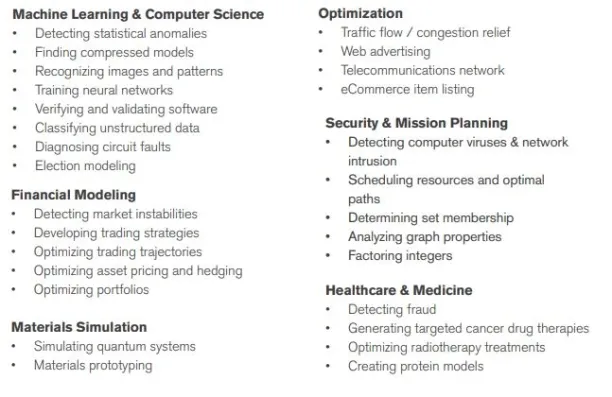
What are its alternatives?
Quantum annealing can be compared with a few related methods such as digital annealing and gate model quantum computing.
Classical computing
For problems with limited complexity, classical computing can be used to find optimal solutions or near-optimal solutions using heuristics.
Digital Annealing
Fujitsu’s digital annealing method is the emulation of quantum annealing using a digital computer architecture. This method, which is not exactly quantum annealing, is quantum annealing simulation using C-mos circuits.
Digital Annealer is a specialized chip that is produced to calculate possible states in parallel based on weight matrices and bias vectors. In order to solve a combinatorial optimization problem “Each bit block uses one-to-one connections over 1,023 weights stored in memory” says Fujitsu fellow, Tamura.
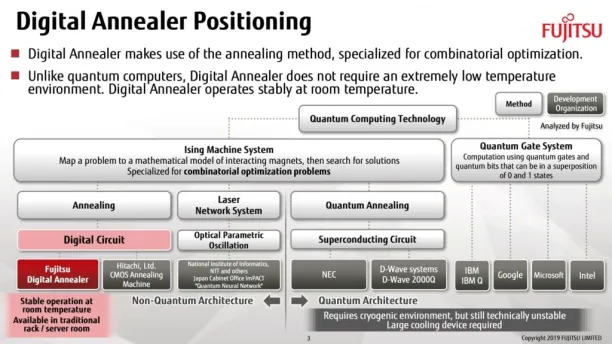
This method does not promise the speed that quantum annealers offer, but it provides stability that qubits cannot provide for today.
Which are the companies that are closest to bringing this to market?
In 2011, the world’s first commercial quantum annealing machine, operating on a 128-qubit, was developed by D-Wave and its price was about US$10,000,000.
D-wave is the first to introduce a quantum annealing approach in order to implement a quantum computer. the company was founded in 1999.
D-Wave announced “Pegasus” which is a quantum processor chip that consist of 5,000 low-noise qubits in February 2019. D-Wave is the leading company that brings the quantum annealers to market.
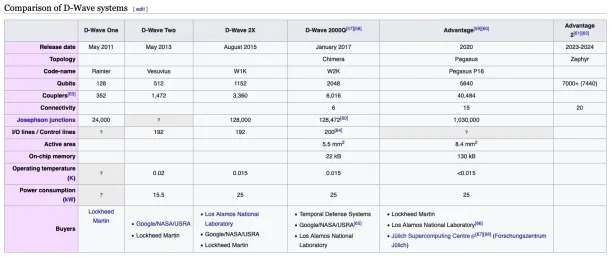
The other player for quantum annealing is a Japanese company NEC Corporation. In December 12, 2018 the company introduced a research program for the development of a quantum annealing machine. However, there is no additional information about any product or research especially in quantum annealing.
In 2018, the New Energy and Industrial Technology Development Organization began funding projects on quantum annealing technologies with superconducting devices.
For more on quantum computing
To learn more about quantum computing, read:
- Cloud Quantum Computing & Top cloud QC vendors
- QC Companies: Guide Based on 4 Ecosystem Maps
- Top 20+ Quantum Computing Applications / Use Cases
Finally, if you believe your business would benefit from adopting a quantum computing solution, we have a data-driven list of vendors.
We can help you get started:
Featured image source

Cem has been the principal analyst at AIMultiple since 2017. AIMultiple informs hundreds of thousands of businesses (as per similarWeb) including 60% of Fortune 500 every month.
Cem's work has been cited by leading global publications including Business Insider, Forbes, Washington Post, global firms like Deloitte, HPE, NGOs like World Economic Forum and supranational organizations like European Commission. You can see more reputable companies and media that referenced AIMultiple.
Throughout his career, Cem served as a tech consultant, tech buyer and tech entrepreneur. He advised businesses on their enterprise software, automation, cloud, AI / ML and other technology related decisions at McKinsey & Company and Altman Solon for more than a decade. He also published a McKinsey report on digitalization.
He led technology strategy and procurement of a telco while reporting to the CEO. He has also led commercial growth of deep tech company Hypatos that reached a 7 digit annual recurring revenue and a 9 digit valuation from 0 within 2 years. Cem's work in Hypatos was covered by leading technology publications like TechCrunch and Business Insider.
Cem regularly speaks at international technology conferences. He graduated from Bogazici University as a computer engineer and holds an MBA from Columbia Business School.
To stay up-to-date on B2B tech & accelerate your enterprise:
Follow on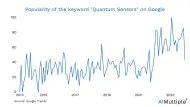

Comments
Your email address will not be published. All fields are required.